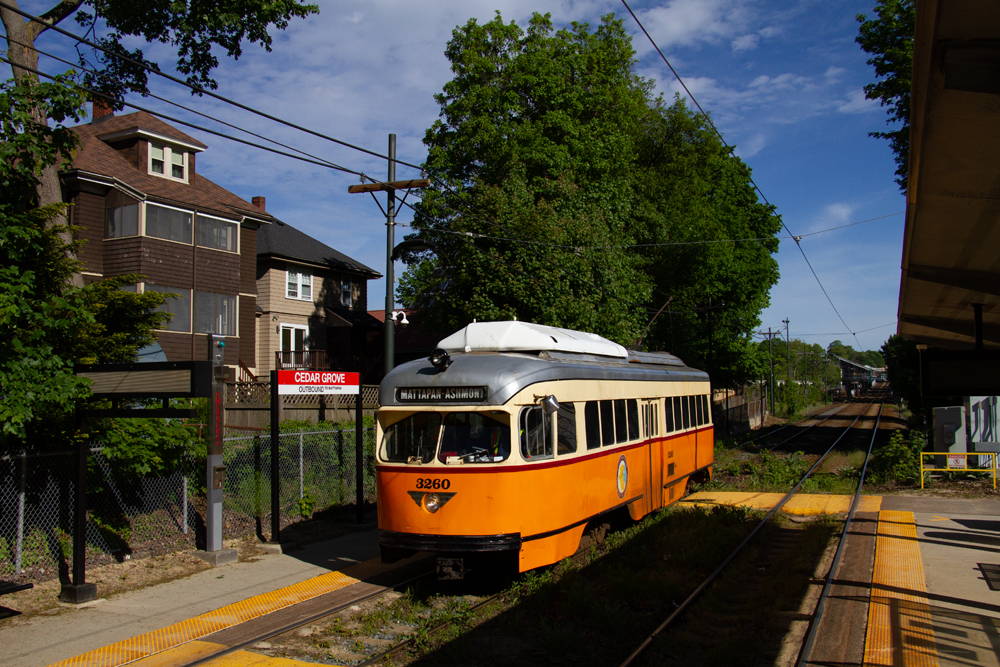
BOSTON — The Massachusetts Bay Transportation Authority will cut service on its Mattapan trolley line, as well more than 30 bus routes, because of an operator shortage.
Boston.com reports the agency announced Tuesday that the cuts will be effective Dec. 19. Employee attrition has outstripped the ability to find new employees, officials say, leading to shortages that are already causing the cancellation of about one in 20 bus trips.
The Mattapan line will see weekday frequencies reduced from every five minutes to every seven minutes, but late-night service on weekends will be increased to every 13 minutes from every 23 minutes. No other changes are currently planned for the other rail transit lines, or for commuter rail, but a total of 70 bus lines will see schedule changes. More details are available at the MBTA website.






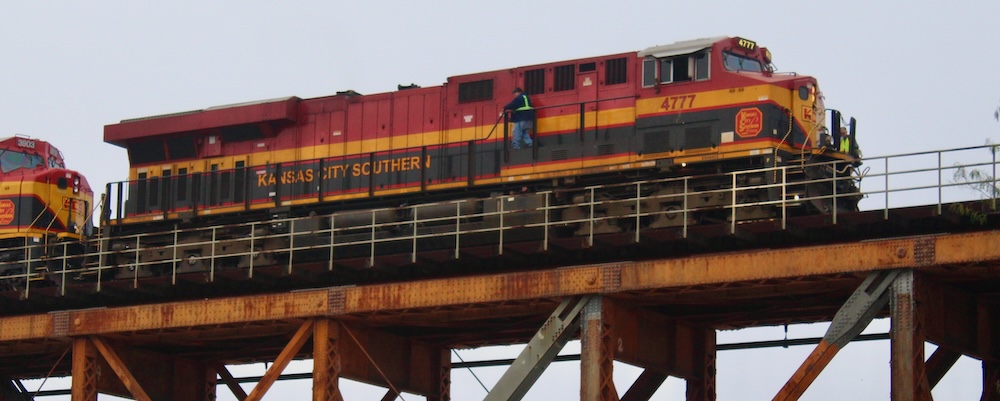
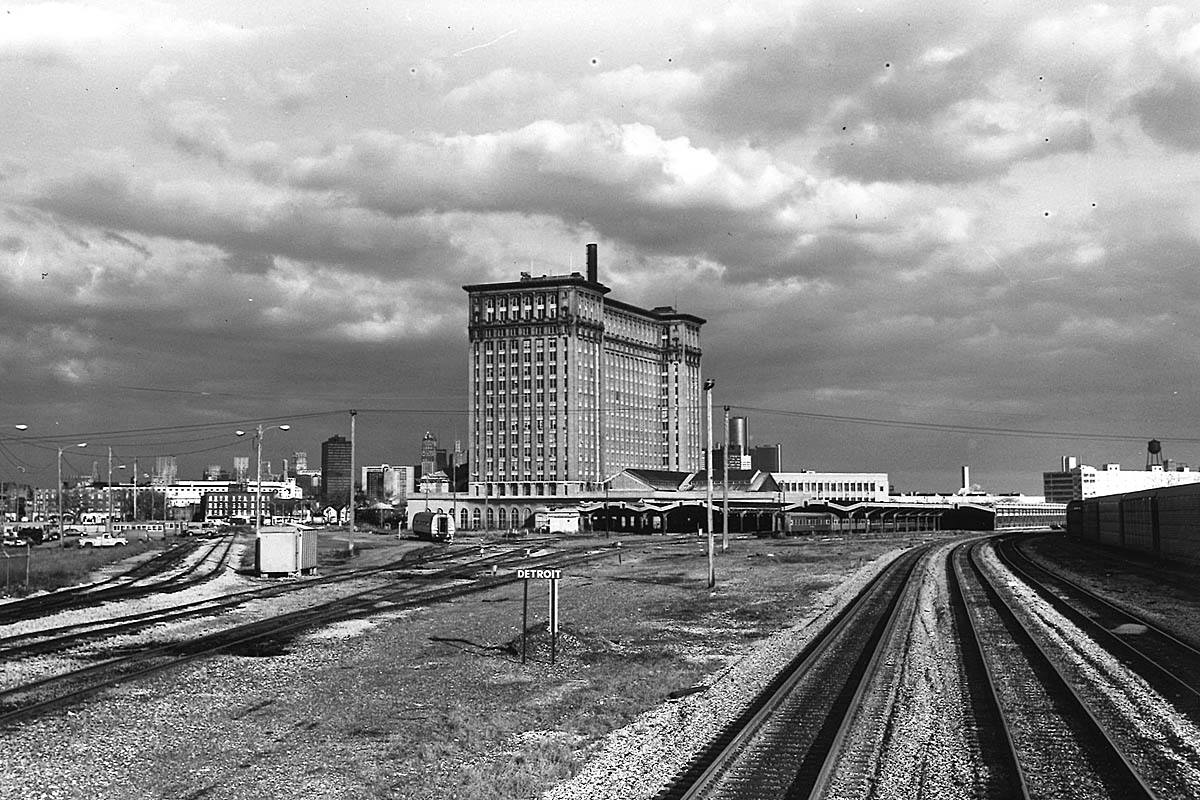
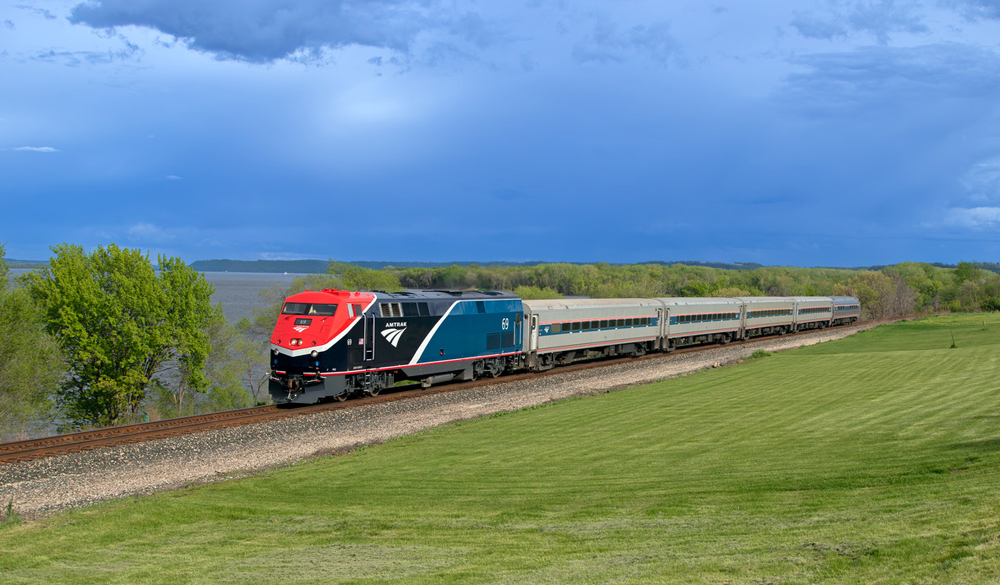
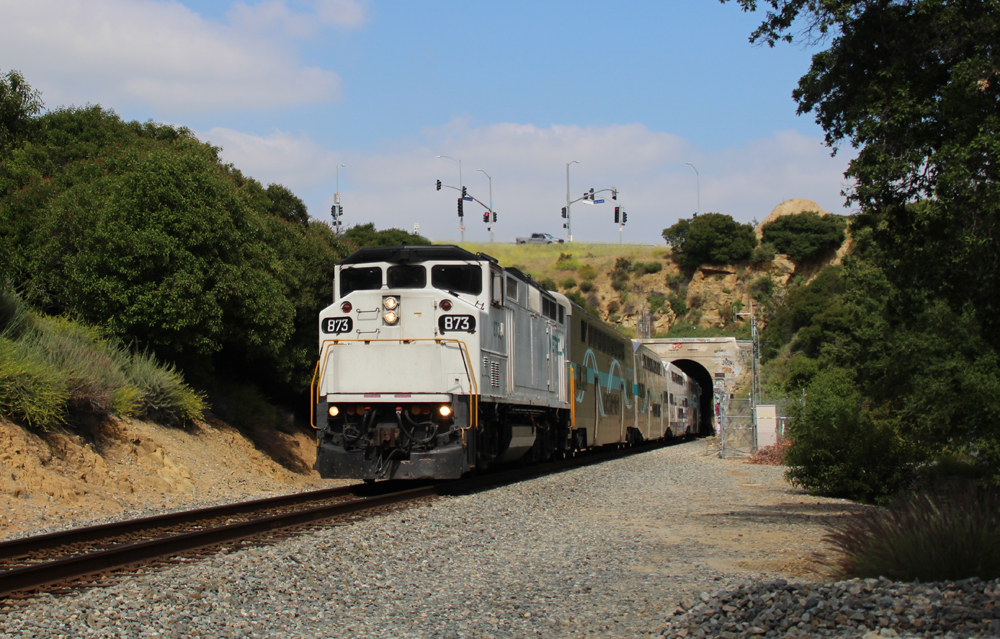




Going back to the photo, the orange and cream livery on the Red Line trolley was the widespread MTA’s color scheme before MTA became MBTA in the mid-1960’s. This was before MBTA color coding: Blue, Orange, Green and Red Lines subways, yellow buses, lavender suburban trains, and, most recent, the Silver Line.
Into the 1960’s, MTA buses and trolleys wore that orange color, as did some of the dilapidated pre-war subway cars still in service into the 1960’s. I remember new Orange Line cars from the 1960’s being orange, but I can’t know if that’s because orange was the traditional MTA color or because they rode on the newly named Orange Line.
Ironically the 1960’s order for 92 new Red Line cars were blue. This fleet held down all Red Line trains until new cars were ordered in the 1970’s for the Red Line South Shore extension to Quincy (later, to Braintree). The Red Line has wider and longer cars than the other lines, four doors on each side of the car. The Red Line always seemed more comfortable – better riding cars without the crush loading of the other subway lines.
It seems unlikely that the Mattapan line will go anywhere. The PCCs will likely get replaced sometime in the next 10 years, but the line itself is unlikely to be closed. That part of Dorchester is a relatively poor neighborhood and transit service is important there.
The recent push to make the short (9.2 mile long) commuter rail Fairmount Line into something more closely resembling a subway/metro (including electrification) is indicative of what the T has planned. It serves another part of this neighborhood.
Seems to me that connecting the Mattapan line to Forest Hill Station in Jamaica Plain would be a no-brainer. It would connect the two ends of the Orange and Red lines to each other without going downtown.
https://www.mbta.com/projects/mattapan-line-transformation
MIKE FRIEDMAN — Thanks for the extremely informative post. Oh what we could do with a two billion dollars or so in Dorchester/ Mattapan. Where you and I might slightly disagree is to that to me successful transit isn’t just for the underprivileged, it is for every social class, which is certainly true in MBTA territory. My last trip home to the Old Sod I could have afforded a rental car or taxicabs but I rode the Red Line within Quincy and Braintree, and the Red and Silver Lines to/ from the airport.
Still in all I believe the priority project (in very affluent neighborhoods) would be the D-Riverside Line in Brookline and Newton, which never should have been built to such low standards. Hopefully your Fairmount line (you post above) wouldn’t repeat that mistake. For those not familiar, the ex-New Haven Fairmount branch was used as a detour when the Amtrak NEC main through Jamaica Plain and Roxbury Crossing was converted from a Chines Wall to a ditch – alongside a new Orange Line replacing the gruesome Washington Street elevated in Roxbury.
Mattapan is a poor neighborhood – but the Ashmont trolley also calls at Milton Lower Mills, Milton being one of America’s wealthiest suburbs.
Ride Ashmont – Mattapan while it’s still there. The line is MBTA’s pain in the rear end, with hand-me-down PCC cars, equipment decades since retired anywhere else. It doesn’t really go anywhere, being a Red Line feeder line to the real Red Line which actually does go everywhere. TRIVIA – maybe America’s shortest transit line that’s in two different counties, Suffolk (Boston) and Norfolk (Milton). (Those are pronounced “Suffick” and “Nawfik”.) Ashmont Station is one of the remaining MBTA mega-structures where (years ago in most cases) trolleys or trolley buses come into a fixed-rail transit station.
Another problem is that the line is too small for a maintenance shop. I believe it was on this forum some years ago we tried to figure out which is the maintenance shop for these cars and how the cars get there.
Thanks Charles, I don’t plan on going to Boston anytime soon but if I did I’d take a ride. Ride PCC’s before they’re only in museums.
They still have them in San Francisco , I rode them a few years ago painted for the cities they originally came from.
The 10 PCC cars on MBTA’s Ashmont-Mattapan line are being rebuilt, adding an anticipated 10 years to their operational lives. Similarly a number of Southeastern Pennsylvania Transportation Authority PCCs are being rebuilt for use on SEPTA’s Route 15 in Philadelphia. The best place to see and ride PCCs remains San Francisco, with a large number of single-end and double-end cars, some original but most second-hand, painted in colors of cities that once operated PCCs.